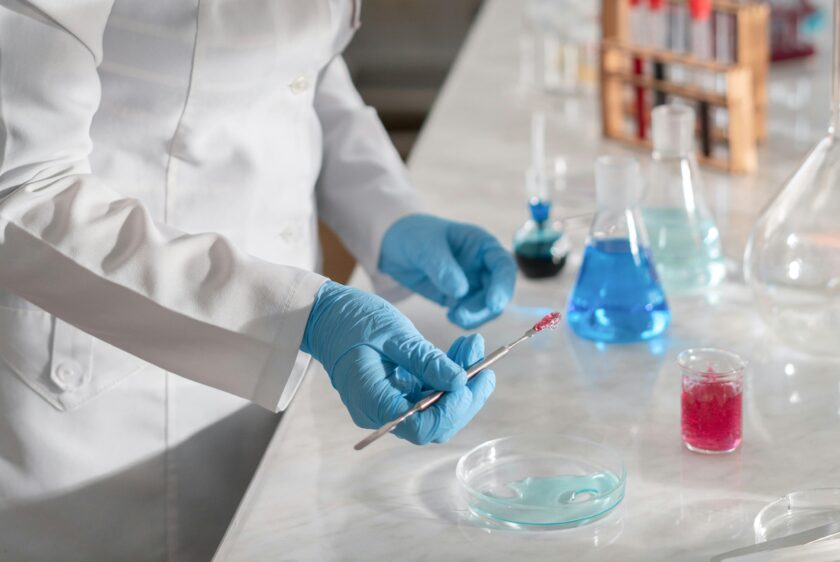The Science Behind Borosilicate Glass: Why It’s Used in Labs
In the realm of laboratory glassware, borosilicate glass stands out as the material of choice for scientists and researchers worldwide. Its unique properties and numerous benefits make it indispensable in various scientific applications. In this blog post, we delve into the science behind borosilicate glass, exploring its properties, benefits, and why it is preferred over other types of glass in laboratory settings. What is Borosilicate Glass? Borosilicate glass is a type of glass composed mainly of silica (SiO2) and boron trioxide (B2O3). This composition gives borosilicate glass its unique thermal and chemical properties, setting it apart from the more common soda-lime glass. Borosilicate glass typically contains about 80% silica and 13% boron trioxide, with the remaining composition consisting of other oxides like sodium oxide and aluminum oxide. Properties of Borosilicate Glass 1. Thermal Resistance One of the most significant properties of borosilicate glass is its exceptional thermal resistance. It has a low coefficient of thermal expansion, meaning it can withstand rapid temperature changes without cracking or shattering. This makes it ideal for applications involving heating and cooling cycles, such as in chemical reactions or sterilization processes. 2. Chemical Durability Borosilicate glass is highly resistant to chemical corrosion and does not react with most chemicals, including acids, bases, and organic solvents. This chemical inertness ensures that the glass does not interfere with the substances it contains, maintaining the purity and integrity of scientific experiments. 3. Optical Clarity The optical clarity of borosilicate glass is another important attribute. It allows clear visibility of the contents and reactions occurring within, which is crucial for accurate observations and measurements in laboratory settings. 4. Mechanical Strength Although not as strong as some specialized materials, borosilicate glass has a higher mechanical strength compared to regular glass. It is more resistant to breakage from impacts and scratches, enhancing its durability and lifespan in a laboratory environment. Benefits of Borosilicate Glass 1. Safety The thermal shock resistance of borosilicate glass reduces the risk of breakage under extreme temperature changes, ensuring a safer working environment. This property is particularly valuable in experiments involving heating or cooling, where glassware failure could pose significant hazards. 2. Precision and Reliability The chemical inertness and optical clarity of borosilicate glass provide high precision and reliability in scientific experiments. Researchers can trust that their results are not being compromised by reactions with the glassware, leading to more accurate and reproducible outcomes. 3. Versatility Borosilicate glass is used in a wide range of laboratory glassware, including beakers, flasks, pipettes, and Petri dishes. Its versatility makes it suitable for various applications, from simple mixing to complex chemical reactions. 4. Long-Term Cost Efficiency While borosilicate glassware may have a higher initial cost compared to soda-lime glass, its durability and resistance to chemical and thermal damage mean that it often lasts longer. This longevity can result in cost savings over time, as there is less need for frequent replacements. Applications of Borosilicate Glass in Laboratories 1. Chemical Reactions Borosilicate glass is ideal for conducting chemical reactions that involve heating, cooling, or exposure to corrosive substances. Its thermal and chemical resistance ensures that the reactions proceed smoothly without the risk of contamination or glass breakage. 2. Storage and Containment Due to its inertness, borosilicate glass is commonly used for storing chemicals and biological samples. It ensures that the stored substances remain uncontaminated over extended periods. 3. Analytical Procedures In analytical chemistry, borosilicate glassware is used for precise measurements and observations. Its optical clarity allows scientists to closely monitor reactions and measure volumes accurately. 4. Biological Studies Borosilicate glass Petri dishes and slides are essential tools in biological research. Their transparency and non-reactivity make them perfect for observing and studying microorganisms, cells, and tissues under a microscope. Why Borosilicate Glass is Preferred Over Other Types of Glass Borosilicate glass’s superiority in thermal resistance, chemical durability, optical clarity, and mechanical strength makes it the preferred choice in laboratories. While soda-lime glass is cheaper and more common, it cannot match the performance and reliability of borosilicate glass in demanding scientific applications. The ability to withstand harsh conditions without compromising the integrity of experiments is what sets borosilicate glass apart. Conclusion Borosilicate glass is an indispensable material in the scientific community, offering unmatched properties and benefits that enhance the accuracy, safety, and efficiency of laboratory work. Its unique composition and resulting characteristics make it the glass of choice for a wide range of applications, ensuring that researchers can carry out their experiments with confidence and precision.
The Science Behind Borosilicate Glass: Why It’s Used in Labs Read More »



